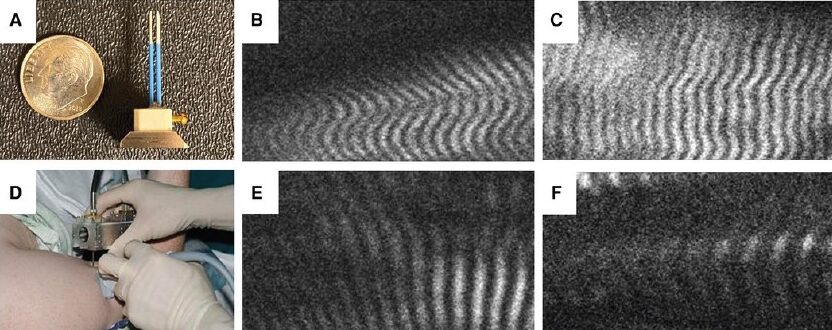Identifying a Common Contracture Phenotype for BPBI and CP
Research By: Sia Nikolaou, PhD | Roger Cornwall, MD
Post Date: August 16, 2022 | Publish Date: Aug. 16, 2022
Orthopaedic Surgery | Top Scientific Achievement


While brachial plexus birth injuries (BPBI) and cerebral palsy (CP) are distinct conditions that cause specific neurological challenges, the phenotype defining muscle contractures for both conditions are characterized by reduced functional muscle length and strength.
A study led by first author Sia Nikolaou and corresponding author Roger Cornwall, MD, suggests this commonality is present, which challenges existing hypotheses that contractures are caused by a relative excess of muscle strength.
With a lack of understanding of the physiology of these contractures, there are no curative treatments for BPBI or CP contractures. This study compared muscle phenotypes for BPBI and CP contractures to test if they were linked to deficiencies in muscle length. The team conducted elbow flexion strength testing in 10 human subjects over 6 years of age with either BPBI or CP. Researchers measured peak torque and impulse along with sarcomere length in each subject’s bilateral biceps brachii muscles using needle microendoscopy.
The team found peak torque and impulse were significantly lower on the affected side compared to the unaffected side, and that sarcomere length was longer in affected muscles compared to unaffected. The longer sarcomeres indicate overstretched muscles, consistent with a deficit in muscle length. These results were similar between subjects with BPBI and CP. These findings suggest that contracture treatments should focus on lengthening affected muscles rather than weakening them.
“This study helped to challenge prevailing beliefs that muscle contractures in patients with BPBI or CP were caused by a relative excess in muscle strength,” Cornwall says. “Given that current treatments often focus on reducing strength in impacted muscles, this research can lead to beneficial shifts in how we understand and treat contractures in these patients.”
The next steps for this line of research include investigating the broader concept of myobrevopathy, or disorders of short muscles, and the mechanisms surrounding the regulation of muscle length.
More 2023 Research Highlights
Chosen by the Division of Orthopaedic Surgery
Parikh SN, Lopreiato N, Veerkamp M. 4-in-1 Quadricepsplasty for Habitual and Fixed Lateral Patellar Dislocation in Children. J Pediatr Orthop. 2023;43(4):237-245. doi:10.1097/BPO.0000000000002351
Zakrzewski AM, Bryant AJ, McCarthy JJ. Can Over-containment Prevent Recurrence in Children With Cerebral Palsy and Hip Dysplasia Undergoing Hip Reconstruction?. J Pediatr Orthop. 2022;42(6):300-306. doi:10.1097/BPO.0000000000002160
Ames TD, Mehlman CT, Toy R, Parikh SN. Comparative Effectiveness of Nonoperative Versus Operative Treatment of Completely Displaced Clavicle Shaft Fractures Among Children. Orthopedics. 2022;45(6):373-377. doi:10.3928/01477447-20220805-03
Zakrzewski AM, Carl JR, McCarthy JJ. Proximal Femoral Screw Hemiepiphysiodesis in Children With Cerebral Palsy Improves the Radiographic Measures of Hip Subluxation. J Pediatr Orthop. 2022;42(6):e583-e589. doi:10.1097/BPO.0000000000002152
Crowe M, Byerly L, Mehlman CT. Transphyseal Distal Humeral Fractures: A 13-Times-Greater Risk of Non-Accidental Trauma Compared with Supracondylar Humeral Fractures in Children Less Than 3 Years of Age. J Bone Joint Surg Am. 2022;104(13):1204-1211. doi:10.2106/JBJS.21.01534
View more discoveries from 50 research divisions and areas
Return to the 2023 Research Annual Report main features
| Original title: | Brachial plexus birth injury and cerebral palsy lead to a common contracture phenotype characterized by reduced functional muscle length and strength |
| Published in: | Frontiers in Rehabilitation Sciences |
| Publish date: | Aug. 16, 2022 |
Research By








